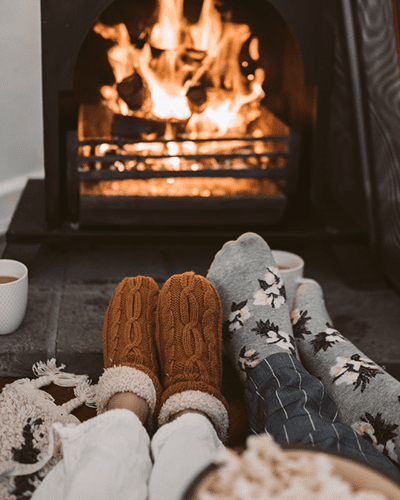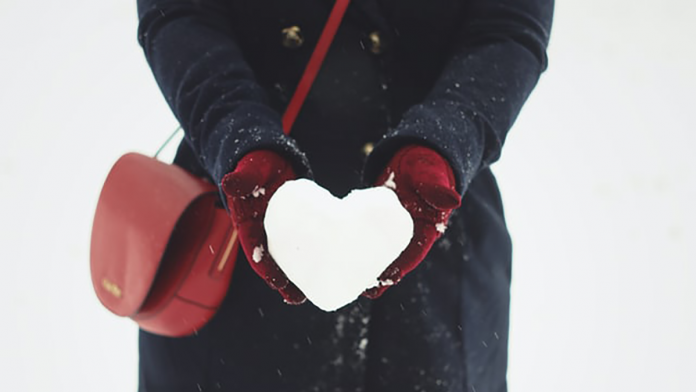Why do we fall into a January slump?
January is no one’s favourite month of the year. It’s dark and dreary and after all of the anticipation of Christmas parties, presents and the build up to the end of the year, it doesn’t feel as if there’s much to look forward to.
Seasonal affective disorder (SAD) can bring on low mood and feelings of lethargy as the nights, no longer lit up by the fairy lights, draw in at what feels like lunch time. The average amount of hours of sunlight in the UK in January is just 8.25, making its days feel very short indeed. Although December has the fewest amount of daylight hours, a mere 7.56 per day, spirits are buoyed by celebrations, the twinkling of the Christmas tree and the lights in the high street which don’t make the long nights feel so oppressive. Not only do we have little sunlight to contend with but thirteen out of thirty one January days are typically rainy or snowy in the UK, meaning it’s fairly likely to be both dark and drizzly.

Financial worries are also a big cause of concern come January. By midmonth, Christmas payday can feel as if it were eons ago. Splurging at the supermarket to treat yourself to festive goodies and luxury tipples, as well as expensive gifts for friends and family can mean that making ends meet in the first month of the year are a big challenge for many.
Despite this, the start of January also brings with it a flood of advertisements insisting you should invest in your health, financially of course, with gym subscriptions and diet plans or start saving for this year’s summer holiday. For those feeling by a bit short of pocket after Christmas, ‘’New Year, new me’’ pressure can easily lead to feeling that the year has already gotten off to a bad start, merely a few days in.
Just a week or two ago, we were treating ourselves to luxury mince pies, another helping of pigs in blankets and indulging in a sherry or three. But come January, a 180 degree flip has occurred. Now is the time to cut out and detox, shed bad habits and start afresh. Back in the office, smug colleagues may already be gloating about how easy they’re finding sticking to their new diet or exercise regime, leaving those less motivated feeling as if they’ve not made it out of the starting blocks of 2022.
All of the party snacks, cheeseboards and wine may well have left you feeling sluggish and little prepared for an active start to the year full of healthy New Year’s resolutions. Given that January is a pretty tough month of the year to get through for so many reasons, is it really the right time to cut out comfort and slim down on indulgence?
The dreariness and bleakness of January has even been ‘proven’. In 2005, travel firm Sky Travel attempted to scientifically determine the most depressing day of the year using a number of factors including the average amount of money owed combined with ability to pay off debts, distance from the most recent pay day, as well as weather and daylight hours amongst others. The result was, unsurprisingly, in January and a Monday (the third Monday of the month to be precise) which is now relatively well known as Blue Monday.
Whilst many dispute the validity of the concept of Blue Monday or dismiss it as an advertising stunt, used by companies to sell retail therapy in the form of holidays, clothes or just about anything to distract from the bleakness January can bring, there’s no denying that motivation can be low in the first month of the year.
What does it really mean to treat yourself?
Despite all of the evidence to the contrary, if done right, January can be a positive and gentle start to the year. Although some people relish the challenge of a post-Christmas diet, participating in Dry January or a gruelling new gym regime with a personal trainer, not everybody is motivated by the post-Christmas cold turkey approach to getting through the month.
Getting out of the post-Christmas slump can be done by shifting the definition of what indulging yourself really means. Treating yourself, by making time for the things you enjoy, prioritising your wellbeing and taking care of your body in a balanced way doesn’t have to be restrictive or boring. It can be as simple as focusing on and listening to your own body and mind, rather being influenced by others.
A few too many treats over Christmas (a mince pie here and a selection box there) have likely left you feeling a bit bloated, sluggish and in need of some new, fresh and somewhat lighter sustenance. This doesn´t necessarily have to mean a diet, however. Making January a month-long culinary adventure, where you learn to cook dishes from a cuisine you’ve always enjoyed in restaurants (even if it’s not the lowest in calories) could give you the boost of fresh food and new flavours that your palate is likely craving.
Getting started with new recipes that make use of the kitchen gadget you were gifted over Christmas, or the one you received last year that still hasn’t been out of its box, can be an energizing way of breaking the monotony of January’s back to work routine. Looking forward to eating tasty, fresh food is surely a better way to spend the dark evenings of the start of the year than to spend it hungry and trying not to eat the last of your Christmas chocolates.
This mind set of indulgence for wellbeing extends outside of the kitchen too. What better time to treat yourself to that gadget you’ve had your eye on, make the most of the January sales by finally picking up some new clothes or picking up the one thing that Santa missed off your list.
Spending more time in the fresh air or dedicating time for a hobby or passion are also means of prioritising your wellbeing and fighting off a low mood in January. Considering your goals for the new year, other than losing weight, can help snap you out of the January slump and open up your horizons.
What is the best way to make New Year’s resolutions stick?
Many of us feel the urge to kick off a new year with big changes; a healthy diet, earlier bedtimes, an exercise plan, a daily meditation routine as well as a savings plan. After all, self-improvement is the hot topic of conversation once people have tidied away their Christmas decorations. But as we all know, choosing too many and over-ambitious resolutions means they are likely to by broken by Valentine’s Day and are certain to be unsustainable throughout the whole year.
Well-chosen resolutions, however, can be a positive push factor for making big changes. The essential point is that they should be SMART – specific, measurable, achievable, relevant and time-bound, as first discussed in the Management Review in 1981.
Nearly everyone has at one time or another, stated ‘getting fit’ as their goal for the New Year. However, pressuring yourself into the first jog (perhaps in years), squeezing yourself into some uncomfortable Lycra and heading out on a chilly morning to the park for an attempt at a quick 5k, will likely leave you feeling sore, a bit sick and will cause a nose-dive in motivation.
Easing yourself in to a fitness routine, perhaps by downloading the NHS’s hugely successful Couch to 5k running companion podcast and training plan would be a SMARTer suggestion. The plan starts, as suggested by the name, from the couch i.e. zero. The aim is specific, measurable, achievable (if you put in the effort), relevant and of course, time-bound as the programme is staggered over nine weeks of training.
The campaign’s success has been bolstered by the many celebrities, including comedian Sarah Millican, BBC Radio 2 DJ Jo Whiley and Still Game star Sanjeev Kholi, who have collaborated by providing motivational voiceovers to inspire participants to keep going.
What does it mean to take care of your winter wellbeing?
For many people, keeping well and positive throughout January and what remains of winter is the priority, as opposed to specific fitness goals. For inspiration in the darker months, it may be helpful to look to the Scandinavians, who have long ago had to learn to deal with few hours of sunlight and cold temperatures throughout much of the year. Curiously, Finland, Iceland and Denmark scored as the top 3 happiest nations in the world in 2020. It is interesting to note however, that Finland’s capital Helsinki only enjoys 6.47 hours of sunlight on average throughout January which amounts to more than an hour and a half less than London. Some parts of Finland see even less, fewer than five hours per day, suggesting we have a lot to learn about making the most of the winter season from our northern neighbours.

The concept of hygge, a term used in both Danish and Norwegian with no direct translation in English, relates to a feeling of cosiness, wellness, comfort and contentment. Pronounced hoo-guh, it was a finalist for Oxford Dictionaries’ Word of the Year 2016 and has become the trendy, international term for taking good care of yourself, particularly during the colder, darker months. Closer to home, the term coorie originating from an old Scots word meaning to cuddle or nestle, has been deemed Scotland’s answer to the cosiness craze. Voted recently as Scotland’s favourite word, it denotes a similar feeling of warmth and comfort found next to a log fire on a winter’s evening (perhaps also helped by a dram of whiskey).
The hygge concept of self-care is said to be part of the national character of Denmark and encourages indulgence in your caprices but not to excess. For example, enjoying a slice of cake (guilt-free) when you fancy it but not having three portions, or spending a dreary, rainy day inside watching movies but taking a big walk in the fresh air the following day. Essentially, it’s all about measure and balance, making it a perfect lifestyle to adopt for those who don’t fancy January detoxes or a strict gym regime, but would like to start off the year with better equilibrium and a focus on wellbeing.
Another essential element of hygge is, without doubt, cosiness and dedicating time to feel comfortable at home. Finding pleasure in doing simple things well, such as brewing a nice pot of tea, finding a warm blanket and watching the rain on the window. Preparing good food, sitting in candlelight and watching logs burn in the fire are daily activities that can really boost our wellbeing. This idea of promoting our own wellness is so entrenched in the Danish culture that local doctors are even said to prescribe ‘tea and hygge’ against the common cold.
In essence, there’s not much point in fighting the darkness, cold and rain that comes in January but with a shift of perspective, you can take pleasure in winter rather than fighting it. As British fell walker, guide book author and illustrator Alfred Wainwright said “There’s no such thing as bad weather, only unsuitable clothes.” Perhaps if we apply that mind set to January, we might enjoy it after all.








Join the discussion